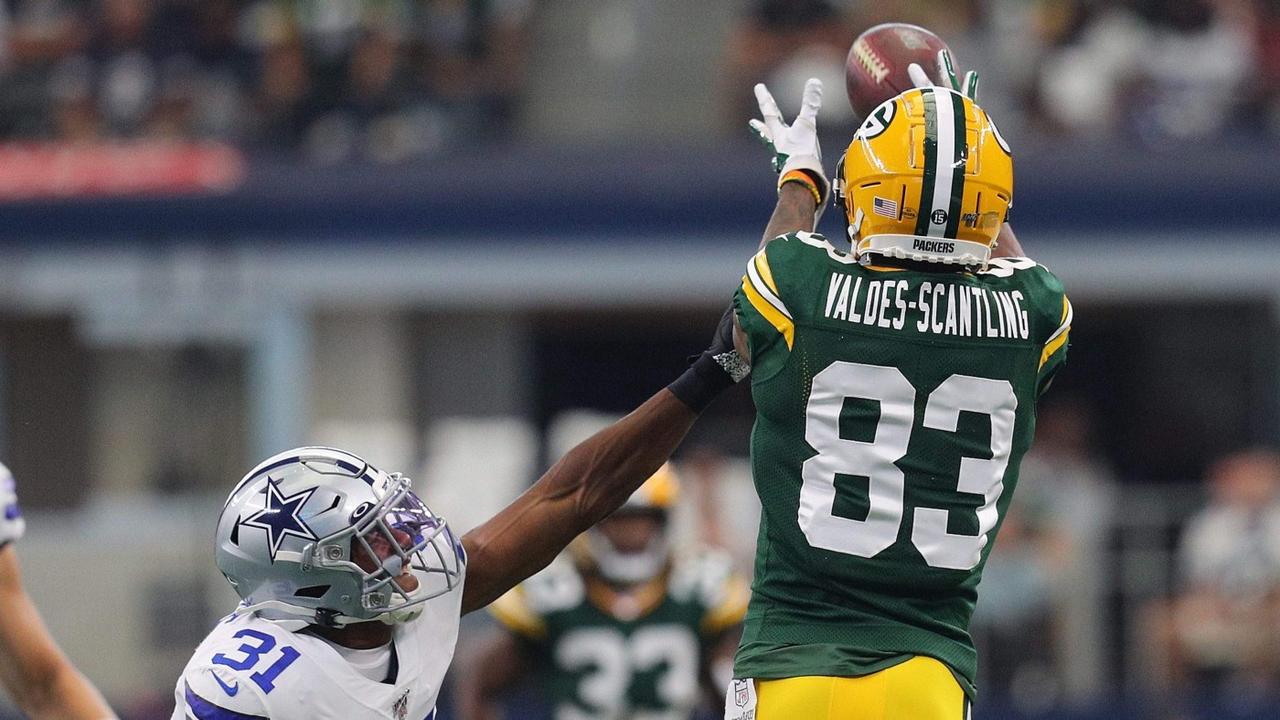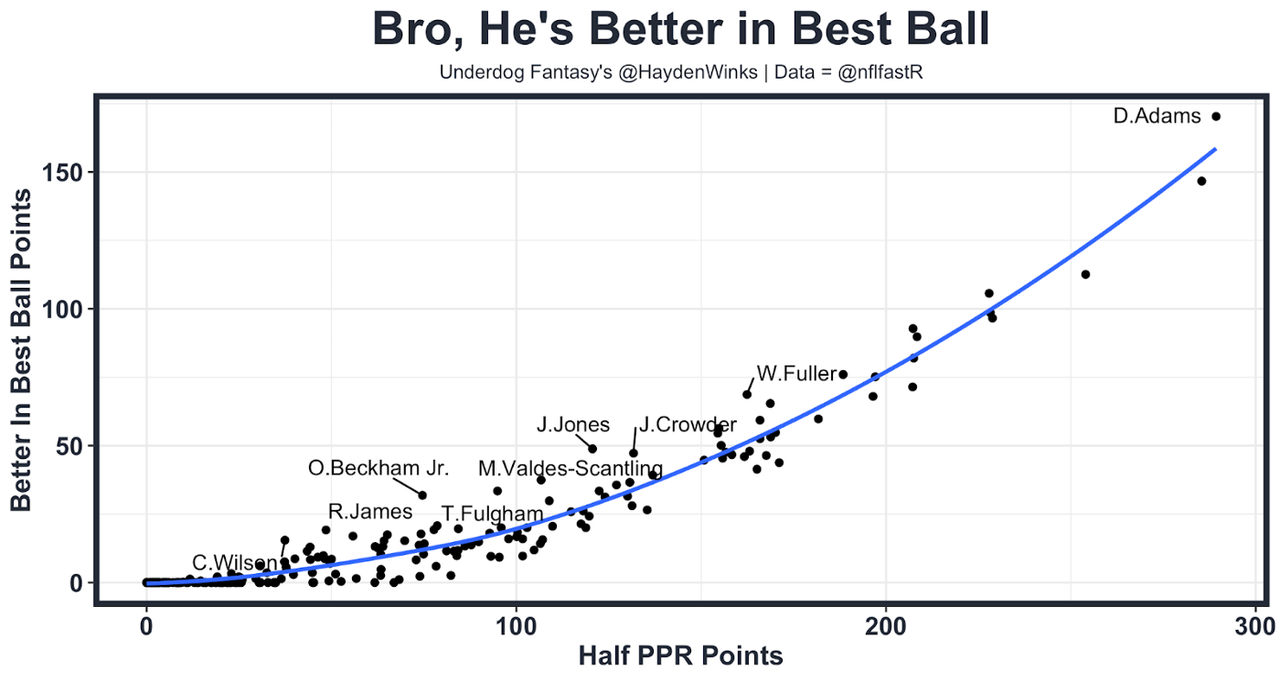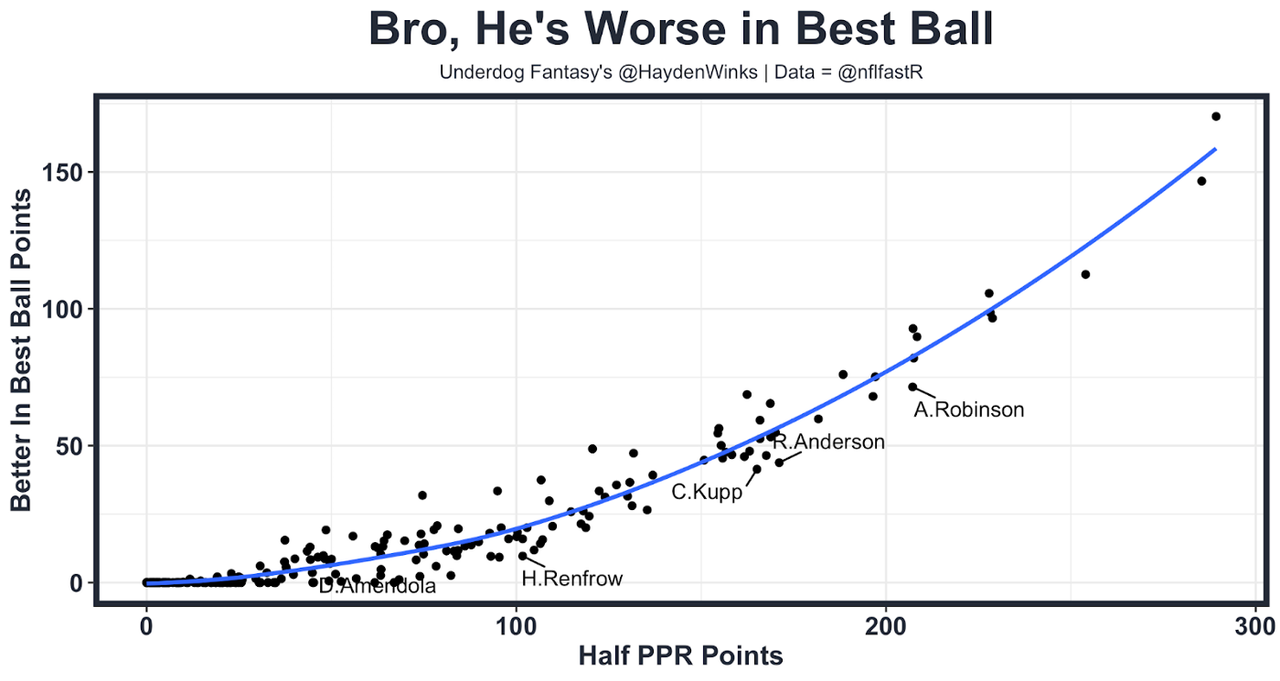Quantifying “Bro, He’s Better in Best Ball”

“Bro, I like him better in best ball” is hard to say with a straight face anymore because it’s said in passing so often on fantasy podcasts, but there actually is something to the trope. Players with more spiked weeks are more valuable in a best ball tournament because it’s a format that solely rewards weekly upside and largely ignores floor. In managed leagues where you have to set weekly rosters (yuck), a player’s weekly floor matters more because those 4.0-point weeks are going into your team’s score. That 4.0-point week from your receiver on Underdog Fantasy isn’t contributing to your team’s weekly score.
But instead of just saying “I like him better in best ball” because we’ve seen him score a 50-yard touchdown on Monday Night Football, I decided to be a total nerd and turn it into an actual metric: “Better In Best Ball Points”.
Here’s how I came up with the metric. The first thing was to see how many points each position was scoring on a weekly basis. The №36 receiver in a given week last year averaged 9.71 half PPR points. The №24 running back in a given week averaged 10.49 half PPR points. The №12 tight end averaged 9.31. Those averages are the baseline points a fantasy player has to clear to actually contribute to your best ball lineup on average. Once I had those data points, I took each fantasy player’s week-by-week half PPR points and only counted points above that positional average. So if a receiver scored 14.71 half PPR points in Week 15, his “Better In Best Ball Points” for that week were 5.0 (14.71–9.71 = 5.0).
Bro, He's Better In Best Ball


Most receivers are just as valuable in traditional re-draft formats as they are in best ball, but there were about two dozen receivers who wandered away from the pack last year, meaning some players are truly “better in best ball”.
Here’s an example…
Packers’ vertical threat Marquez Valdes-Scantling scored 106.7 half PPR points in 2020, while Raiders’ slot receiver Hunter Renfrow scored 101.7. Same value, right? Nope! MVS had 37.5 “Better in Best Ball Points” to Renfrow’s 9.7, meaning MVS actually helped the average best ball team by 27.8 points more than Renfrow did. This is because MVS actually had spiked weeks in the downfield role he played in. Renfrow’s near-line-of-scrimmage usage severely lowered his weekly ceiling, so he rarely had a top-36 WR week.
In general, the biggest gap between two receivers who scored a similar amount of half PPR points was about 20–25 “Better In Best Ball Points” across the entire season. That’s a slight edge to take advantage of, though I wouldn’t completely overreact in best ball drafts. A slot receiver projected for 175 half PPR points is likely going to out-produce a vertical receiver projected for 100 half PPR points. But when two receivers have similar yearly projections and one has a higher aDOT and is more involved in the red zone, pick him every time.